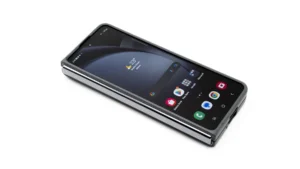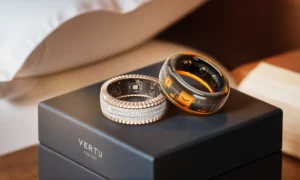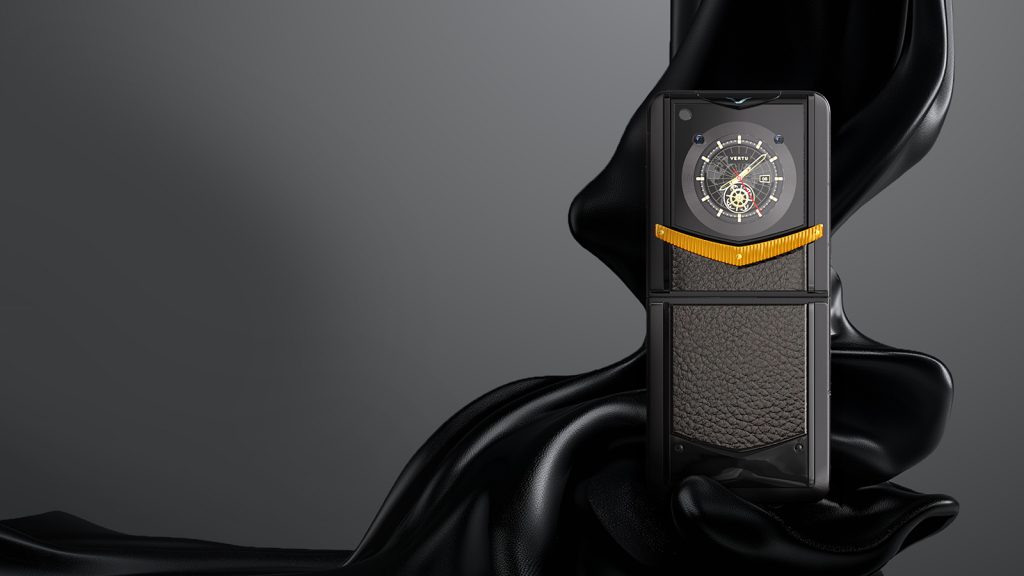
Looking for the best 5g phone with the strongest signal reception in 2025? You should check out the Samsung Galaxy S25 Ultra, Apple iPhone 16 Pro Max, and Google Pixel 9 Pro. These best smartphones stand out because they offer the best signal reception, even in tough areas. Strong 5g signal means fewer dropped calls, smooth streaming, and fast downloads. Studies show that good 5g reception leads to less lag and better quality of service. If you want reliable 5g, these phones are the best smartphones to consider.
Key Takeaways
-
Phones with better antennas and many 5G bands give the best signal. These phones have a strong and steady signal. Top 5G phones like Samsung Galaxy S25 Ultra, iPhone 16 Pro Max, and Google Pixel 9 Pro work well even in places with weak signal. Your carrier, where you live, and your phone’s modem can change how strong and fast your 5G signal is. Check if your carrier supports the 5G bands and look at their coverage map before you buy a phone. This helps you get good signal. Taking off thick cases and staying close to windows can help your 5G signal every day.
What Impacts 5G Signal Reception
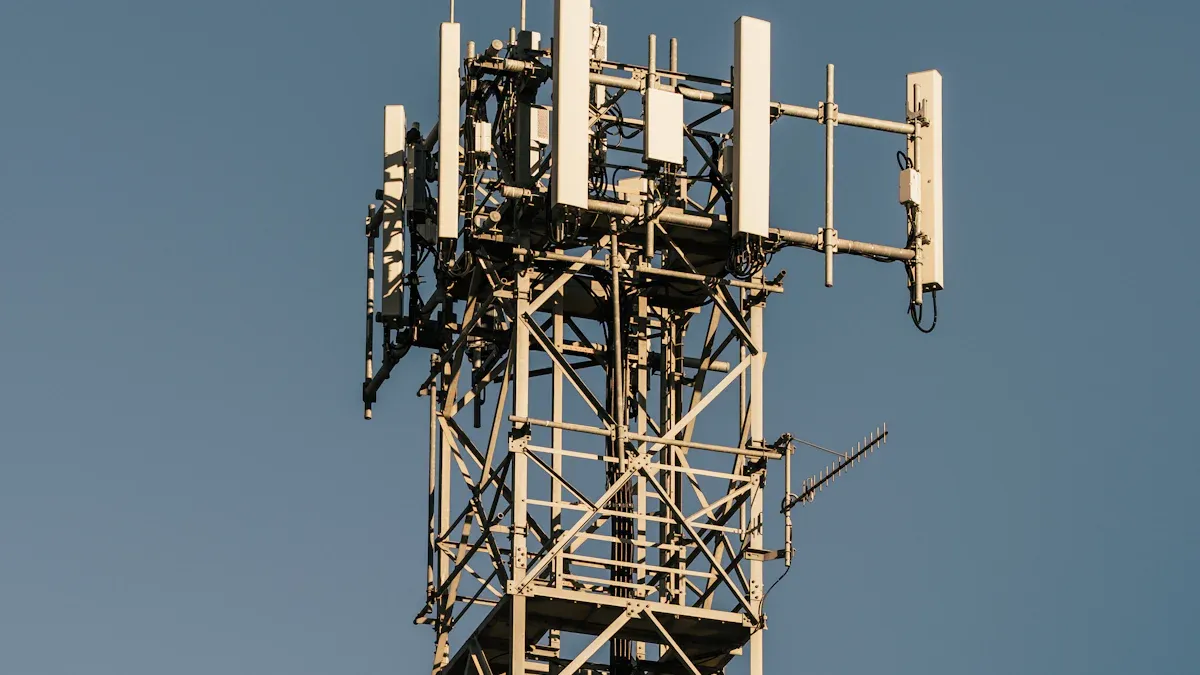
When you want the best 5g experience, you need to know what affects your signal. Many things can change how strong your 5g signal is. Let’s break down the main factors that impact your signal strength and cell phone reception.
Antenna Design
Antenna design is a big deal for 5g signal. Phones with advanced antennas, like 4×4 MIMO, use four antennas to grab more of the 5g network. This setup boosts your signal strength and keeps your connection steady, even when you move around. Some new phones use AI antennas that adjust to your hand position, so you get better signal no matter how you hold your phone. Good antenna placement inside the phone also helps avoid signal loss. If the antenna sits in a bad spot, your hand might block the signal and lower your cellular signal.
Tip: Phones with the latest antenna tech usually have stronger 5g signal, especially in places with weak coverage.
5G Band Support
Not all 5g bands are the same. Your phone needs to support the right 5g bands to get the best signal. Some bands, like n71, reach far and give you better signal strength in rural areas. Others, like n41 or n77, offer faster speed but cover less distance. If your phone supports more 5g bands, you can connect to more parts of the 5g network. Carrier aggregation lets your phone use several bands at once, which means better speed and stronger signal.
|
Carrier |
Key 5G Bands |
Band Type |
Notes |
|---|---|---|---|
|
T-Mobile |
Low/Mid-band |
Wide coverage and good speed |
|
|
AT&T |
n77, n5 |
Mid/Low-band |
Fast 5g+ and extended range |
Modem Technology
The modem inside your phone controls how well you connect to the 5g network. Newer modems, like the Qualcomm X65, support more 5g bands and use better carrier aggregation. This means you get faster speed and stronger signal strength. Phones with older modems might miss out on some 5g features or have weaker signal. Modems that support 4×4 MIMO and 5g standalone mode give you the best performance. Software updates also help keep your modem working at its best.
Carrier and Location
Your carrier and where you live play a huge role in your 5g signal. Some carriers have better 5g coverage in cities, while others reach farther into rural areas. Coverage maps from real-world tests show where you can expect strong or weak signal. Buildings, trees, and even rain can block your 5g signal and lower your signal strength. If you live near a 5g tower, you’ll likely get better signal and faster speed. Always check your carrier’s coverage map before you buy a new phone.
Note: Your 5g signal can change a lot depending on your location and the carrier you choose.
Best 5G Phones for Signal Reception
Samsung Galaxy S25 Ultra
You want the best 5g phone for signal strength? The Samsung Galaxy S25 Ultra stands out. This phone uses a top-tier Qualcomm modem and advanced 4×4 MIMO antennas. You get strong 5g reception, even when you travel through areas with weak coverage. The S25 Ultra supports a wide range of 5g bands, so you can connect to almost any network. Users love the fast speed and steady connection. Many say they rarely lose signal, even in rural zones. The phone’s smart antenna system adjusts to your grip, so you always get the best signal reception. If you want one of the best smartphones for 5g performance, this flagship smartphone should be on your list.
Tip: The S25 Ultra’s signal strength shines in crowded places like stadiums or airports.
Apple iPhone 16 Pro Max
Apple’s iPhone 16 Pro Max is one of the best 5g phones for good signal reception. Apple uses a custom Qualcomm modem and smart antenna design. You get fast 5g speed and strong signal, even in tough spots. Here’s a quick look at what makes the iPhone 16 Pro Max special for 5g reception:
|
Feature |
Description |
|---|---|
|
Modem Chip |
Custom Qualcomm SDX71M modem chip, made just for Apple. |
|
5G Standard Support |
May support advanced 5g features, better than older models. |
|
Real-world Performance |
Better cellular performance than iPhone 15. |
|
mmWave Antenna (US model) |
One mmWave antenna module, down from two in older models. |
|
mmWave Support |
Only US models have mmWave, which gives ultra-fast 5g. |
|
MIMO Antennas |
Internal 4×4 MIMO antennas for strong cellular signal. |
|
SIM Configuration |
US models use eSIM only; international models use physical SIM cards. |
You will notice the iPhone 16 Pro Max keeps your calls clear and your downloads fast. The phone’s 4×4 MIMO antennas help you get the best signal reception, even if you hold your phone in different ways. In weak signal areas, this phone often holds onto 5g better than most competitors. Many users say it is the best 5g phone for both city and country use.
Google Pixel 9 Pro
The Google Pixel 9 Pro is one of the best smartphones for 5g reception. It uses a modern modem and supports many 5g bands. You get good signal reception in most places. The Pixel 9 Pro’s antenna system helps you stay connected, but some users notice a few quirks:
-
The Pixel 9 Pro sometimes sticks to the first Wi-Fi access point it finds, even if you move closer to a stronger one.
-
Competing phones like the iPhone 16 switch to better signals more quickly.
-
You cannot change the roaming settings on the Pixel 9 Pro, so it may not always pick the best signal.
-
If you adjust your home network, you can help the Pixel 9 Pro roam better.
-
In most cases, the Pixel 9 Pro gives you strong 5g performance, but it may need a little help in tricky spots.
If you want a phone that works well in most places and you do not mind tweaking your network, the Pixel 9 Pro is a solid choice for best signal reception.
Vertu Quantum Flip
The Vertu Quantum Flip is a luxury phone, but it also delivers strong 5g signal. This phone uses high-end materials and advanced antenna tech. You get wide 5g band support, so you can connect in many countries. The Quantum Flip’s modem works with both low and mid-band 5g, giving you good signal reception in cities and rural areas. Users praise the phone’s call quality and fast downloads. If you want a stylish phone with the best signal reception, the Vertu Quantum Flip is worth a look.
Note: Vertu phones are rare, but they offer top-notch 5g reception for those who want something unique.
Nokia X20
The Nokia X20 is one of the best 5g phones for rural areas. This phone supports important low-frequency 5g bands like n28 and n71. These bands travel farther and give you better signal strength outside the city. The Nokia X20 handles 5g connectivity well in rural locations, but your experience depends on your carrier’s network. If your carrier uses the right bands, you will enjoy good signal reception and steady 5g performance. Some users say the phone’s coverage drops if the carrier does not support all the bands, so always check before you buy.
Motorola One 5G
You want a budget-friendly option with strong 5g signal? The Motorola One 5G is a great pick. This phone uses a solid modem and supports many 5g bands. You get good signal reception in both cities and small towns. The Motorola One 5G’s antenna design helps you keep a steady connection, even when you move around. Users like the phone’s reliable call quality and fast speed. It is one of the best smartphones for people who want the best signal reception without spending a lot.
LG V40 ThinQ
The LG V40 ThinQ may be an older model, but it still offers good 5g reception. This phone supports key 5g bands and uses a proven antenna setup. You get strong signal strength in most places, and the phone holds onto 5g even when the signal gets weak. Many users say the LG V40 ThinQ is one of the best smartphones for people who live in areas with spotty coverage. The phone’s modem and antenna work together to give you the best signal reception possible for its price.
If you want a phone that balances price and 5g performance, the LG V40 ThinQ is a smart choice.
Comparing the Best 5G Phones
Key Specs Overview
You want to know how these phones stack up? Here’s a quick look at the main specs that matter for 5g. This table helps you see what each phone offers for signal, speed, and coverage.
|
Phone |
5G Bands Supported |
Modem Type |
Antenna Tech |
Battery Life |
Display Size |
|---|---|---|---|---|---|
|
Galaxy S25 Ultra |
Most global bands |
Qualcomm X75 |
4×4 MIMO, AI |
5000mAh |
6.8″ |
|
iPhone 16 Pro Max |
Wide US/Global |
Custom Qualcomm |
4×4 MIMO |
4500mAh |
6.7″ |
|
Pixel 9 Pro |
Many global bands |
Google Tensor G4 |
Smart Antenna |
4800mAh |
6.8″ |
|
Vertu Quantum Flip |
Global, luxury |
Snapdragon 8 Gen 3 |
Advanced MIMO |
4700mAh |
6.7″ |
|
Nokia X20 |
Key rural bands |
Snapdragon 695 |
Standard MIMO |
4470mAh |
6.67″ |
|
Motorola One 5G |
US/Global |
Snapdragon 765 |
4×4 MIMO |
5000mAh |
6.7″ |
|
LG V40 ThinQ |
Select bands |
Snapdragon 845 |
Proven MIMO |
3300mAh |
6.4″ |
Tip: Phones with more 5g bands and bigger batteries usually give you better coverage and longer use.
Signal Reception Features
You care about signal strength and reception, right? Each of these smartphones uses special features to boost your 5g experience. The Galaxy S25 Ultra and iPhone 16 Pro Max both use 4×4 MIMO antennas. This means you get the best signal reception, even in crowded places. The Pixel 9 Pro uses smart antennas that help you hold onto a strong signal as you move. Vertu Quantum Flip stands out with luxury materials that don’t block your cellular signal. Nokia X20 supports low-frequency bands, so you get good signal reception in rural areas. Motorola One 5G and LG V40 ThinQ both use proven antenna setups for steady cell phone reception.
Note: If you want the best 5g reception, look for phones with advanced antennas and wide band support.
Pros and Cons
Let’s break down the pros and cons so you can pick the best smartphones for your needs:
-
Galaxy S25 Ultra
-
👍 Best signal strength, fast speed, wide 5g support.
-
👎 Price is high.
-
-
iPhone 16 Pro Max
-
👍 Great 5g performance, strong reception, smooth experience.
-
👎 mmWave only in US models.
-
-
Pixel 9 Pro
-
👍 Smart antennas, good signal, easy to use.
-
👎 Roaming settings are limited.
-
-
Vertu Quantum Flip
-
👍 Luxury build, strong signal, global bands.
-
👎 Expensive and rare.
-
-
Nokia X20
-
👍 Best signal reception in rural areas, affordable.
-
👎 Not as fast as others.
-
-
Motorola One 5G
-
👍 Reliable signal, budget-friendly, good battery.
-
👎 Older modem.
-
-
LG V40 ThinQ
-
👍 Steady reception, good price.
-
👎 Smaller battery, older tech.
-
If you want the best signal reception, focus on antenna design and 5g band support. These features make a big difference in real-world 5g reception.
How to Choose the Best 5G Phone
5G Band Compatibility
When you buy a new 5g phone, check if it works with your carrier’s 5g bands. Each carrier uses different bands for their network. Your phone must match these bands to get good 5g service. You can find this info on your carrier’s website or ask customer support. If you skip this, you might get weak signal or lose 5g in some places. Making sure your phone matches your carrier’s bands helps you avoid problems and keeps your 5g working well.
Carrier Support
Not all carriers give the same 5g service everywhere. Some carriers use different names for their networks, which can be confusing. For example, in the US, one carrier calls its better LTE “5GE,” but it is not real 5g. This can change your signal and how your phone works. Carriers build their networks in different ways, so coverage and speed can be very different depending on where you live. Always check your carrier’s coverage map and ask about real 5g in your area before you buy.
Antenna and Modem Specs
You want strong 5g signal and steady reception? Look for phones with good antenna and modem features. Here are some things to check:
-
MIMO antennas help boost 5g speed and keep your connection strong.
-
Directional antennas focus on the closest tower for better signal.
-
High-gain antennas help you get better range in weak spots.
-
Make sure your modem works with external antennas and antenna diversity.
Phones with these features usually give you better 5g, especially if you live far from a tower or in busy places.
Tip: Good antenna placement and setup can really help your 5g signal.
Real-World Testing
Specs only tell part of the story, but real-world tests and user reviews show how a phone works every day. People test 5g phones at home, at work, and while traveling. For example, some tests found Samsung phones kept a stronger signal than others in weak areas. User reviews also talk about software updates and carrier settings that change 5g reception. Reading these reviews helps you find the best phones for strong 5g, not just on paper but in real life.
Is 5G Better for Signal Reception?
5G vs 4G LTE
You may ask if 5g gives better signal than 4G LTE. The answer depends on what matters most to you. 5g is much faster and has less lag than 4G LTE. You can see the differences in this table:
|
Feature |
5G |
4G LTE |
|---|---|---|
|
Max Speed |
Up to 10 Gbps theoretical |
Typically 10-50 Mbps |
|
Real-World Speed |
50-500 Mbps in good coverage areas |
10-50 Mbps typical |
|
Latency |
1-10 ms (ultra-low latency) |
30-50 ms (higher latency) |
|
Coverage |
Spotty, mostly urban centers |
Nearly nationwide, reliable |
|
Indoor Coverage |
Weak penetration through walls |
Stronger indoor penetration |
|
Battery Impact |
Higher battery drain (15-25% more) |
More power-efficient |
|
Reliability |
Inconsistent due to limited coverage |
Consistent and dependable |
5g lets you download faster and wait less for things to load. You can stream, play games, and video call with less delay. But 4G LTE is better for coverage and works well indoors. It is also more reliable in places where 5g towers are not close.
Tip: If you live in a city, you will probably enjoy fast 5g speeds. In small towns, 4G LTE may give you a steadier signal.
Urban vs Rural Performance
5g works best in cities because there are more towers. This means you get a stronger signal and faster speed. In the country, towers are far apart, so 5g can be weak. Here is a quick look at how 5g does in different places:
|
Parameter |
Rural Average |
Urban Average |
Urban vs Rural Difference |
|---|---|---|---|
|
5G Access Time (%) |
~11.5% |
~29.4% |
Urban access time nearly 3 times higher |
|
Packet Loss (%) |
1.24% |
0.65% |
Urban packet loss is about half of rural |
|
Signal Strength (RSRP, dBm) |
-102.7 dBm (poor) |
-96.4 dBm (acceptable) |
Urban signal strength stronger due to tower density |
|
Signal Quality (RSRQ, dB) |
-11.1 dB |
-11.7 dB |
Signal quality similar, slightly better in rural due to less congestion |
|
Latency (ms) |
71.1 ms |
58.8 ms |
Urban latency approximately 20% lower |
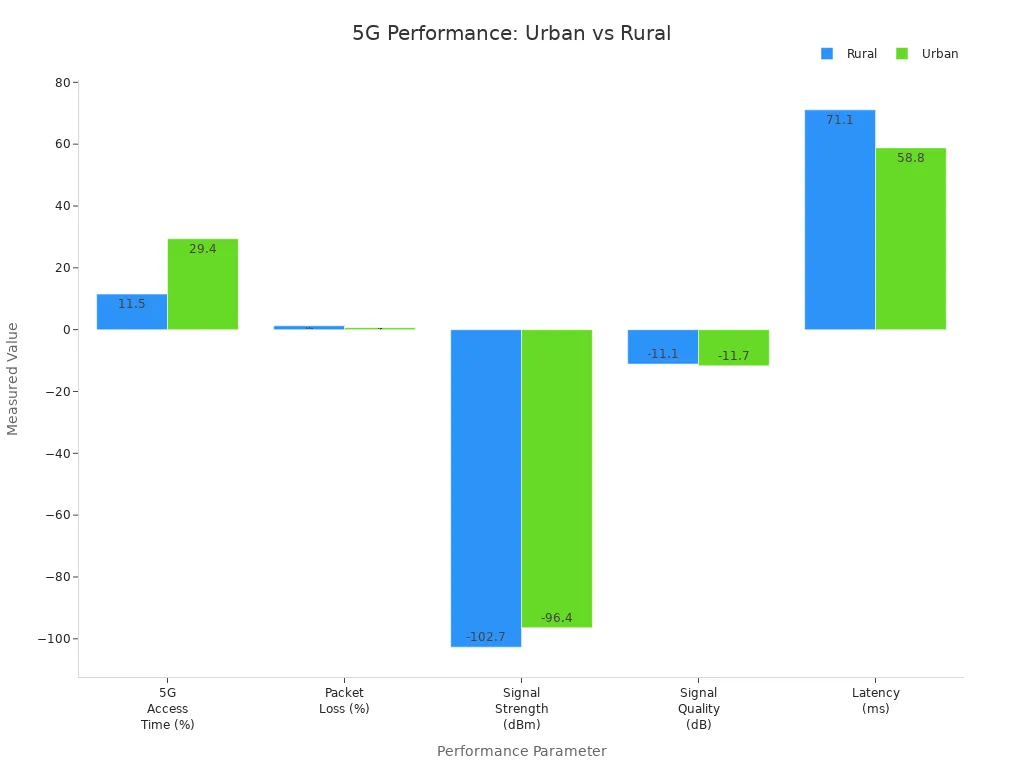
In cities, you get more 5g time, a stronger signal, and less lag. In rural areas, 5g is harder to get and the signal is weaker. Sometimes, rural areas have a bit better signal quality because fewer people use the network.
Note: If you live in the country, check your carrier’s 5g map before buying. Phones that support more low-band 5g can help you get better signal.
Future-Proofing
Getting a 5g phone in 2025 helps you get ready for new tech. Many carriers now use 5g standalone networks. These networks bring new features like network slicing and very low lag. You can use new apps and services that need fast and steady connections.
-
5g-Advanced gives better upload speeds, less lag, and smarter networks with AI.
-
You can use cloud apps that need lots of speed and low lag.
-
Phones with 5g-A can send hard tasks to the cloud, so you do not need the newest hardware.
-
5g standalone networks let you use special features like network slicing and better service quality.
-
Big cities already use 5g-A for smart city tech and new digital tools.
-
By 2026, most new phones will have 5g-A, so your 2025 phone will still be up to date.
If you want a phone that lasts and works with new tech, picking a 5g phone now is a smart idea.
You now know the top 5G phones for strong signal in 2025. These models stand out because they use advanced modems, support more bands, and have better antennas. Real-world user feedback shows they keep calls clear and downloads fast, even in tough spots.
-
Remove thick or metal phone cases.
-
Move near windows or outside.
-
Keep your phone charged.
-
Use Wi-Fi calling if needed.
Have you noticed a difference in your 5G signal? Share your story or ask a question below!
FAQ
What makes a phone get better 5G signal?
You get better 5G signal from phones with more 5G bands, strong antennas, and a good modem. Phones like the Galaxy S25 Ultra and iPhone 16 Pro Max use these features to help you stay connected almost anywhere.
Can my phone case block 5G signal?
Yes, thick or metal cases can block your 5G signal. Try using a slim, plastic case or no case at all if you want the best signal.
Tip: If your signal drops, remove your case and check again.
How do I know if my area has good 5G coverage?
You can check your carrier’s coverage map online. These maps show where you get strong 5G and where you might have weak spots. Ask your carrier for details if you are not sure.
Do all 5G phones work with every carrier?
No, not every 5G phone works with every carrier. You need to make sure your phone supports the same 5G bands your carrier uses. Check the phone’s specs and ask your carrier before you buy.
Will 5G drain my battery faster?
Yes, 5G can use more battery than 4G. Your phone works harder to keep a fast connection. To save battery, turn off 5G when you do not need it or use Wi-Fi when possible.


